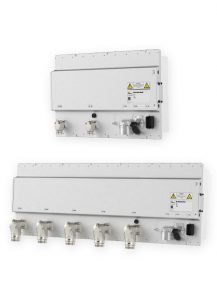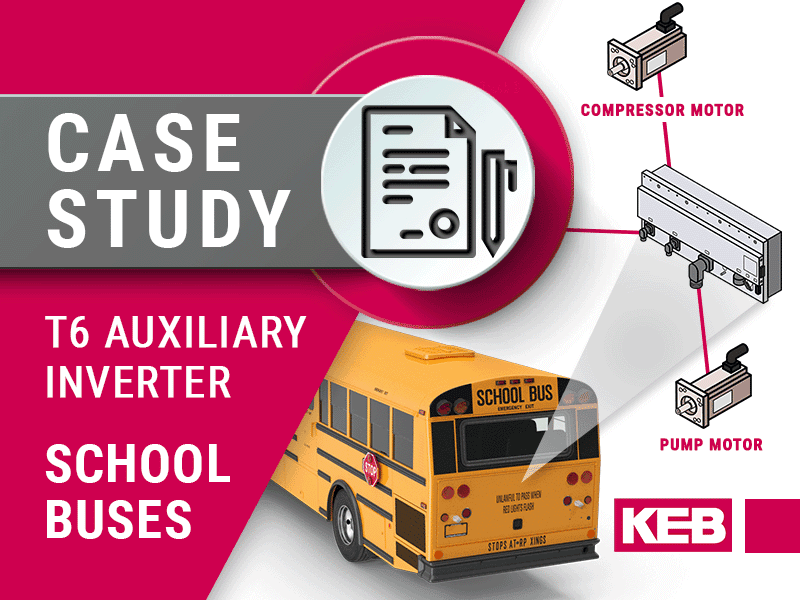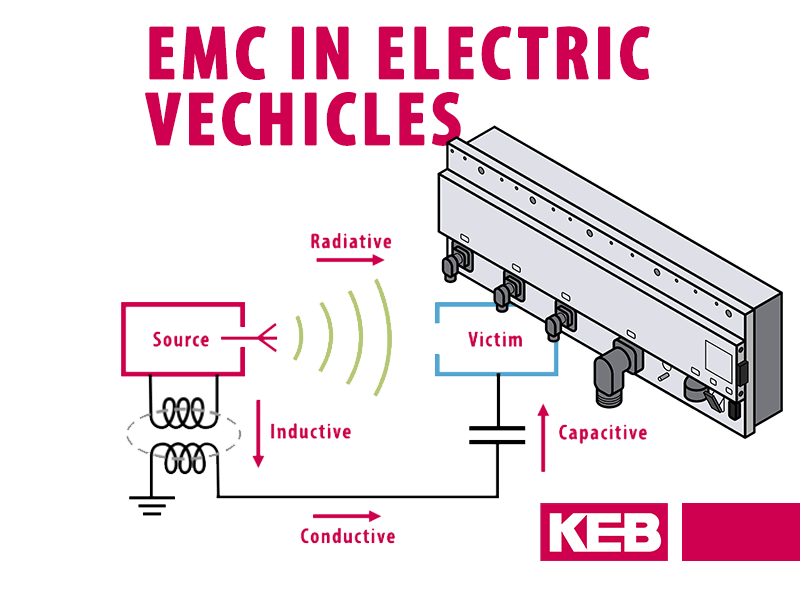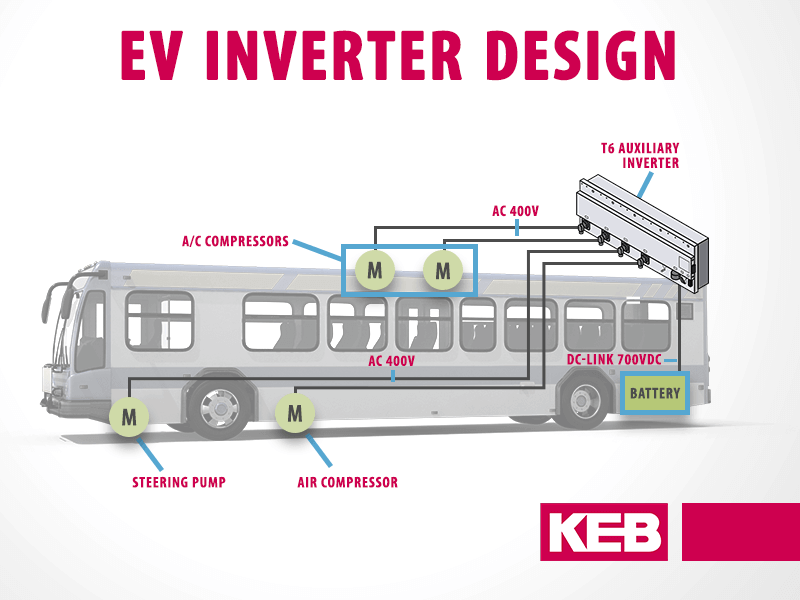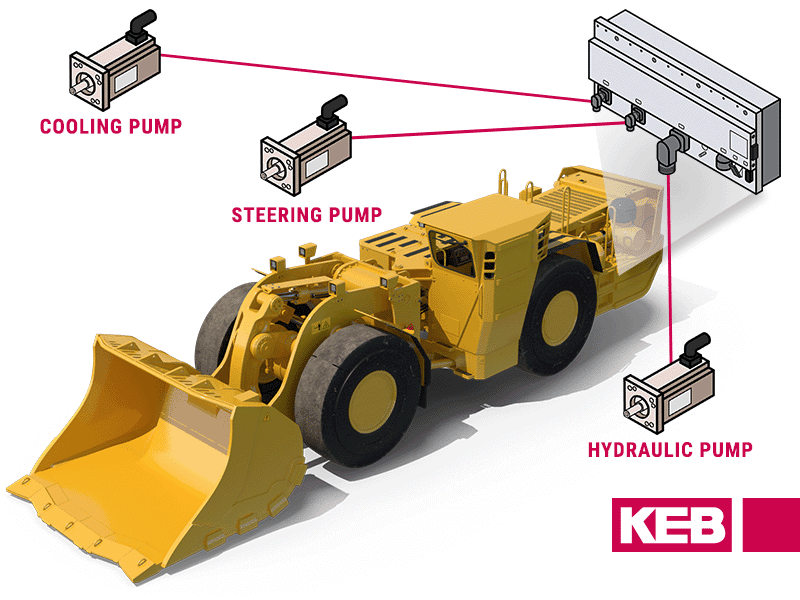Electrifying Auxiliaries with VFDs in Commercial eMobility applications
There is no question that electric vehicles are on the rise. While consumer automotive may get the most attention, commercial vehicles are quietly making progress. Electric buses have already come to fruition and are gaining ground fast, semi electrification which has been debatable is finding its niche, and electric agricultural machinery and implements are showing up on the horizon. While the propulsion axis is the obvious candidate for electrification of the powertrain, the auxiliaries (compressors, pumps, fans, PTO, etc.) are the next logical step to consider in vehicle electrification. This article explores the topic further by discussing the use of variable frequency drives (VFDs) as a means to electrify the auxiliaries and provides areas of consideration when evaluating such solutions.
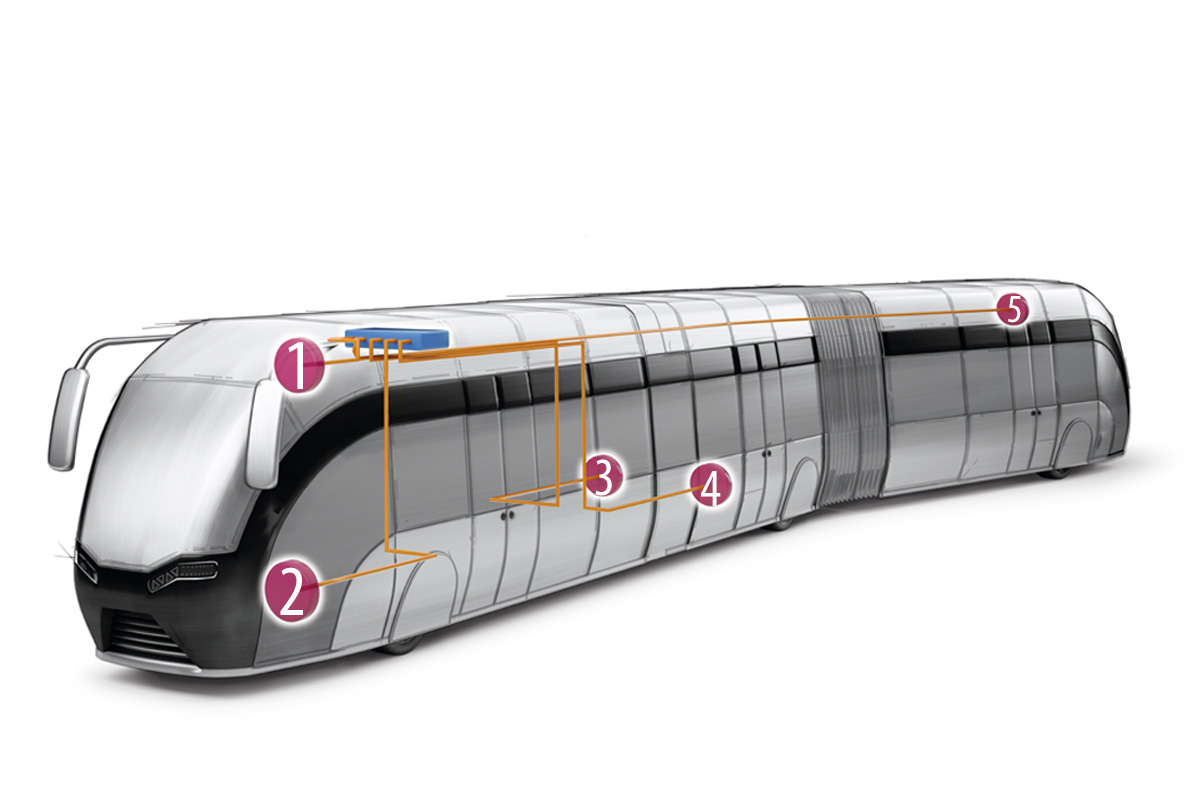
In combustion vehicle applications, there are several axes driven by the engine which are integral to the vehicle’s operation such as the water, fuel, and oil pumps or cooling fans. In addition, there are those axes which may not be critical to vehicle operation but are nonetheless important supplements to the vehicle operation, such as hydraulic power-steering or vacuum brake pumps and air conditioning compressors. And, in some cases, there are even additional accessory axes, such as power take-off (PTO).
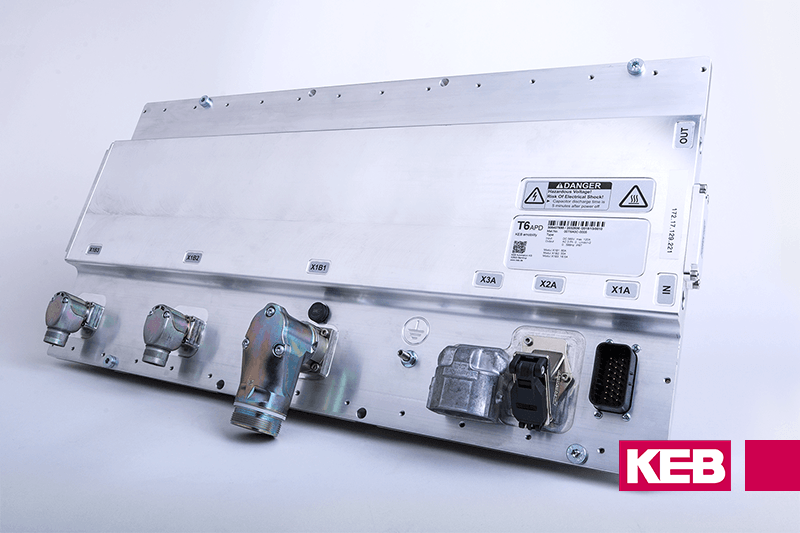
In electric vehicles, various axes to support the engine operation are no longer needed but for those which remain there is no constantly running engine to power these axes. For that matter, there is no reason these auxiliary axes need to be associated with the main motor or even placed within proximity; rather they become their own independent axes. As such, electrification of these axes can optimize performance and handling of each. Moreover, optimizing performance energy consumption can also be reduced to conserve system battery power.
There are various options when considering electrifying the auxiliaries. The most basic option is to turn DC motors on or off with switches or contactors from the DC power supplied by either a battery or rectified generator source. While this may seem simple and low-cost at first, it is not the most efficient solution for several reasons. First, DC motors may not be as energy efficient as AC motors and may have additional wear parts such as carbon brushes.
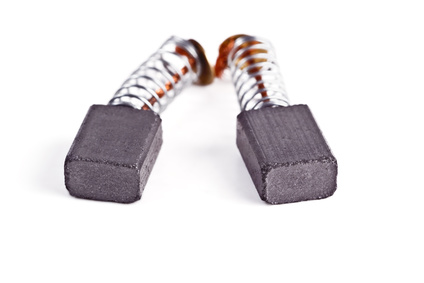
Second, on/off switching of motors does not provide variable speed control and is not energy efficient in terms of the load based on actual demand. And lastly, monitoring, balancing, and distributing load consumption between auxiliaries for energy management and motor protection can become complex both from the hardware and control standpoints.
A better option would be the use of variable frequency drives (VFDs; also known by many other terms including inverters, variable speed drives, electric drives, etc.). VFDs utilize power transistors to pulse-width the DC supply to simulate variable AC output waveforms. The primary benefit of VFDs is the ability to regulate the auxiliary motor based on load demand which can be an easier way to control, balance, and manage power consumption and thus battery power. But, not all VFDs are created equal and this requires a deeper dive for a true comparison.
So, what considerations should be given to a VFD solution for commercial EV applications?
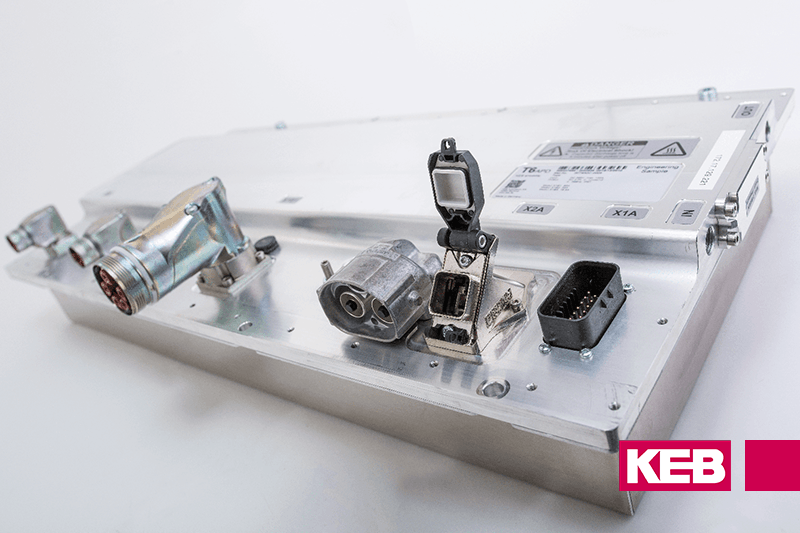
Automotive Design
Temperature, Vibration, and Environment – At the forefront of VFD consideration is whether a unit is designed for operation in automotive applications. Compared to standard industrial VFDs, this should include the use of automotive quality components with a wide climatic temperature range and assembled to withstand high vibration and mechanical shock. Additionally, the degree of environmental protection should be considered. Industrial VFDs are commonly IP20 (protects against finger size ingress), which provides no liquid environmental protection, and would require the unit to be housed in an enclosure. On the other hand, IP6k9k/67 (ISO/DIN) rated units can withstand water immersion and be mounted externally or conveniently to the chassis.
Layout and Space Consideration
Scalable (Multi-axis) and Modular – Most commercial vehicle applications will have the opportunity to electrify several auxiliaries within the vehicle. For example, an urban transit bus may a have steering pump, an air compressor, and an air conditioner which could be electrified. An integrated, multi-axis solution significantly reduces space and wiring through consolidation of redundant components and parallel connections as opposed to a stand-alone VFD for each axis there would be a significant amount of component redundancy. Likewise, it is worth considering whether the number of axes needed can be supported through a single multi-axis unit since some manufacturers only offer up to two outputs, whereas others offer up to six. Additionally, it is worth considering whether the VFD power sizes are modular. That is, whether different power modules can be mixed and matched within a singular multi-axis system; for example, a system with 1 x 15kW axis and 2 x 7.5kW axes.
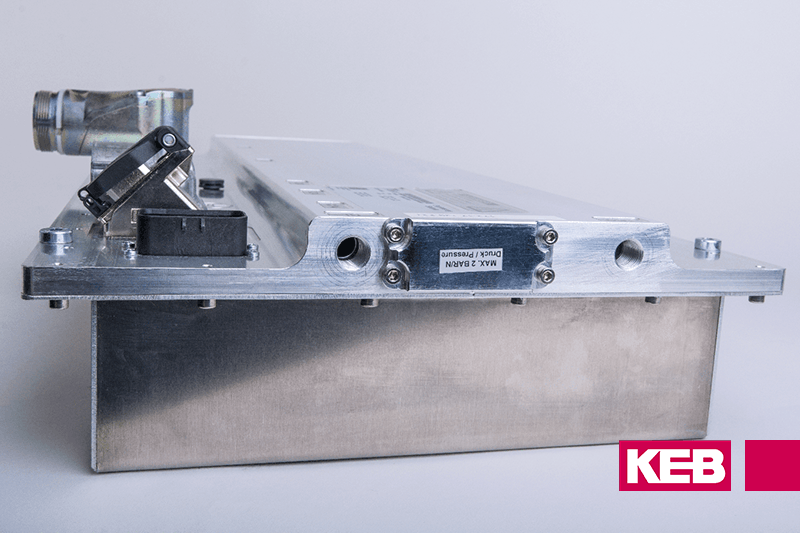
Water-cooled vs. Air-cooled – Another space-saving consideration is the type of heatsink cooling. Where convection air cooling may be the simplest solution to implement, it requires additional space to accommodate a larger heatsink and space for ventilated mass air flow. On the other hand, an air-cooled solution will provide significant space savings in comparison and coolant connections are generally already available on vehicle systems, so this is less of a hurdle than other application types.
Motor Types Supported
Among AC motors, there are various types including induction, permanent magnet synchronous servo, and switched reluctance. It is therefore important to know which motor types are supported by the VFD and whether the model or firmware supports multiple types (especially for multi-axis units). And, while each of the motor types has their benefit and drawbacks, not all of them can be controlled well in open loop and the types of control loops supported should also be considered.
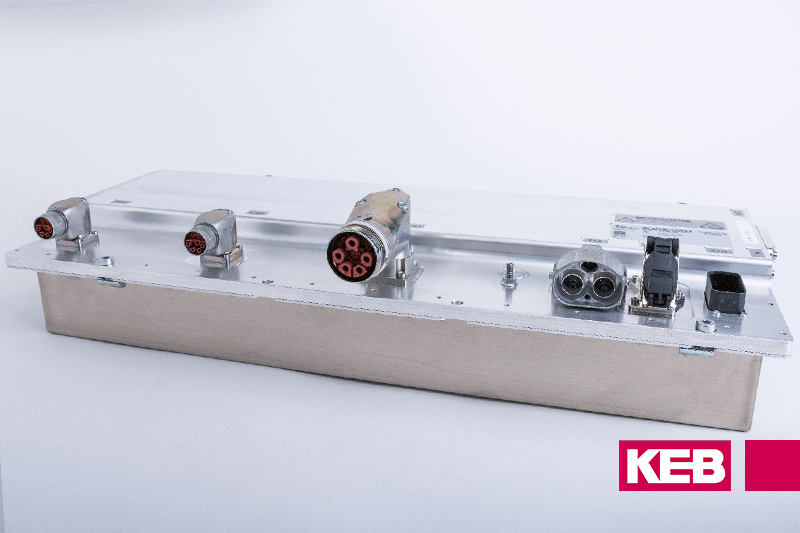
Control Loop
In regards to motor control, there are generally two primary types: open loop and closed loop. A third option, sensorless closed loop, provides the best of both worlds with closed loop accuracy and efficiency with the simplicity of open loop without the feedback encoder and cabling. Each is discussed in further detail below.
Open Loop: Variable speed control in its most basic form is achieved with open loop control, or Volts/Herts (V/Hz), which proportionally varies the output voltage and frequency to regulate the motor speed. Since there is no feedback, there is no regulation of the output in terms of speed of current. For example, a ‘stuck’ motor could end up drawing high current without rotating. Thus motor performance is less reliable, can lead to inefficient operation which consumes excess power, and does not provide protection to the motor.
Closed Loop: Issues with unregulated control in open loop are resolved in closed loop operation, providing excellent operation and high efficiency. The drawback is that this requires an encoder which adds additional space, cabling, cost, and a potential point of failure.
Sensorless Closed Loop: Also known as SCL, sensorless closed loop provides the best of both worlds providing closed loop motor performance without encoder feedback. Not to be confused with open loop vector which uses a generic motor model based on entered data, SCL utilizes direct measurement of motor characteristics to create a sophisticated motor model which provides pre-correction and better than closed-loop performance can be achieved. Additional benefits of a (sensorless) closed loop include:
Power Efficiency – Closing the control loop allows the VFD to precisely maintain the command speed by regulating the motor voltage and current accordingly. As such, the output regulates power as needed based on loading conditions, does so with less motor losses utilizing a motor model, and tracks the command more responsively to load changes thus operating the motors more efficiently both at nominal and peak loading conditions.
Current Control, Motor Protection, and Energy Management – With the ability to regulate the current based on loading conditions as monitored by the speed feedback, it is possible to set conditions to regulate or limit the current. This allows protection of the motor based on programmable overload characteristics as well as protection of the unit itself from excessive current draw in overcurrent conditions. Additionally, it is a means for limiting or balancing loads and power consumption to conserve battery power.
Positioning Control – In addition to speed control, there is also the option of positioning control without the need for external hardware such as limit switches. Likewise, positioning control also allows for the use of linear motors.
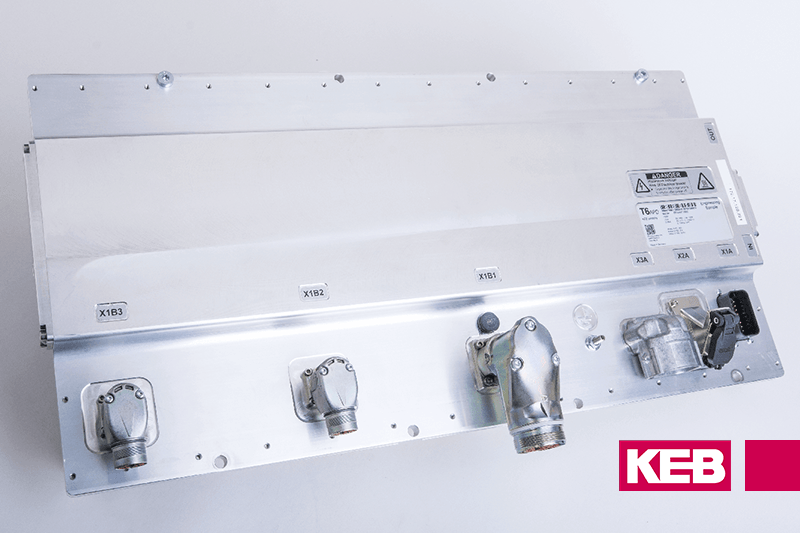
System Communication and Control
Communication Protocols – In regards to how the VFD communicates with the rest of the vehicle control system from a control and I/O standpoint, it should be considered which communication protocols are readily supported. Such common protocols include CANopen, CAN J1939 for vehicle applications, and ISOBUS for agricultural applications.
Embedded Controller and Programming Environment – While the main vehicle control unit can control and coordinate all vehicle systems, with an embedded controller in a VFD system it is also possible that this functionality can be segmented and off-loaded to operate in parallel as an independent controller or in conjunction with the main vehicle control. For example, a multi-axis VFD handling the auxiliaries could run its own independent application handling program (for example, load and energy management between motors) while still communicating with the main vehicle control performing its own operations. The second consideration in regards to embedded controls is the type of programming environment. A widely, freely programmable environment such as CODESYS which supports the IEC 61131-3 programming languages should be the go-to consideration.
Electromagnetic Compatibility (EMC) Design and Approval
Last but not least in regards to consideration of VFD solutions is the manufacturer’s attention the electromagnetic compatibility (EMC) design and certification. Issues with electrical noise can be extremely difficult to troubleshoot or root out after the fact. Such attention to this detail from a design point is not necessarily difficult but is a red flag when this attention has not been given. In this regard, VFD solutions should have EMC according to ECE-R10 and E1 type approvals. With so many electric devices in a small space with electric vehicle applications, EMC considerations should be a priority rather than an after-thought.
Utilizing VFDs to electrify the auxiliary compressors, pumps, fans and other motors in emobility applications offers several benefits. While cost, space, and efficiency are certainly important, there are other fundamental aspects which may be overlooked yet critically important such as whether a unit is built specifically with the application in mind and to automotive standards. Also, not all offerings have the same features and additional consideration of solutions can unlock further benefits. Features such sensorless closed-loop motor operation and provide additional power efficiency, a modular and scalable multi-axis design reduces wiring and space, and communication protocol support allows for ready system integration. Such features may not be salient at initial consideration but can provide significant value-added when evaluating the system as a whole.
Tony Heiser is the Business Development Manager at KEB America, Inc. for the T6 Transportation Inverter. He received his Bachelor of Electrical Engineering from the University of Minnesota, Minneapolis-St. Paul and has 12+ years of experience with AC motor controls and VFD applications with KEB.
For more information on the T6 VFD for electrifying auxiliaries, contact us using the form below.
Let's Work Together
Connect with us today to learn more about our industrial automation solutions—and how to commission them for your application.
